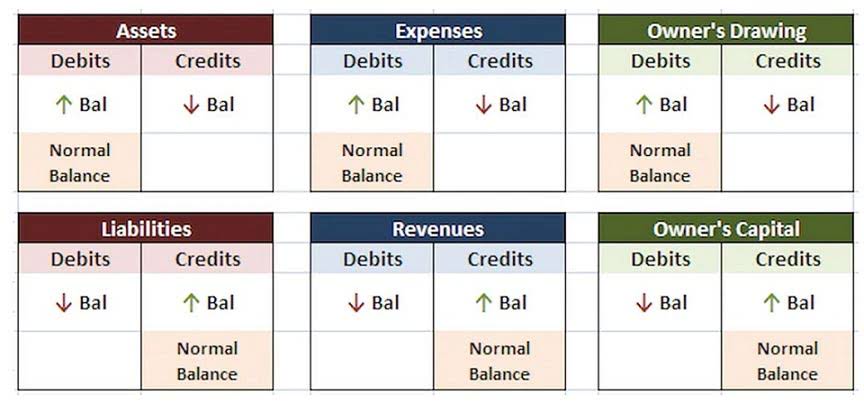Operating liabilities are amounts owed resulting from a company's normal operations, whereas non-operating liabilities are amounts owed for things not related to a company's operations. Deferred revenue is revenue recorded for services or goods that are part of its operations; therefore, deferred revenue is an operating liability. On August 1, the company would record a revenue of $0 on the income statement. https://personal-accounting.org/ On the balance sheet, cash would increase by $1,200, and a liability called deferred revenue of $1,200 would be created. The initial journal entry will be a debit to the cash account and credit to the unearned revenue account. Under accrual accounting, the timing of revenue recognition and when revenue is considered “earned” depends on when the product or service is delivered to the customer.
Deferred revenue is classified as a liability because the recipient has not yet earned the cash they received. The company must satisfy its debt to the customer before recognizing revenue. Due to its short-term nature, deferred revenue is often expected to satisfy within the next year. Referring to the example above, on August 1, https://simple-accounting.org/ when the company’s net income is $0, it would see an increase in current liabilities of $1,200, which would result in cash from operating activities of $1,200. The timing of customers’ payments can be volatile and unpredictable, so it makes sense to ignore the timing of the cash payment and recognize revenue when it is earned.
As the product or service is delivered over time, it is recognized proportionally as revenue on the income statement. The deferred revenue account is normally classified as a current liability on the balance sheet. It can be classified as a long-term liability if performance is not expected within the next 12 months.
- As the fiscal year progresses, the company sends the newspaper to its customer each month and recognizes revenue.
- The simple answer is that they are required to, due to the accounting principles of revenue recognition.
- As the landscaper performs weekly maintenance services, $50 will move from the balance sheet as deferred revenue to the income statement as earned revenue.
- However, the IRS requires the use of a depreciation method that is different from all available GAAP methods.
- Typically, deferred revenue is listed as a current liability on the balance sheet due to prepayment terms ordinarily lasting fewer than twelve months.
Marketable securities include assets such as stocks, Treasuries, commercial paper, exchange traded funds (ETFs), and other money market instruments. In all the scenarios above, the company must repay the customer for the prepayment. And, https://accountingcoaching.online/ you will not be able to properly calculate your SaaS gross margin and recurring gross margin. And without gross margins, it’s hard to steer the financial performance of your business or assess the impact of new bookings or new headcount.
Noncurrent Assets
Noncurrent liabilities are compared to cash flow, to see if a company will be able to meet its financial obligations in the long-term. While lenders are primarily concerned with short-term liquidity and the amount of current liabilities, long-term investors use noncurrent liabilities to gauge whether a company is using excessive leverage. The more stable a company’s cash flows, the more debt it can support without increasing its default risk. Now let's assume that on December 27, the design company receives the $30,000 and it will begin the project on January 4. Therefore, on December 27, the design company will record a debit of $30,000 to Cash and a credit of $30,000 to Deferred Revenues. On December 31, its balance sheet will report a current liability of $30,000 with the description Deferred revenues.
- While cash from deferred revenues might sit in your bank account just like cash from earned revenues, the two are not the same.
- The new accounting rules establish a five-step process for recognizing deferred revenue.
- While the company got cash upfront for a job not yet done when considering deferred revenue, the company is still waiting for cash for a job it has done.
GAAP, deferred revenue is treated as a liability on the balance sheet, since the revenue recognition requirements are incomplete. Therefore, if a company collects payments for products or services not actually delivered, the payment received cannot yet be counted as revenue. Investors and banks will also have a very difficult time understanding the performance of your business without proper revenue recognition.
Deferred Revenue
On the other hand, if services are performed for more than twelve months, it will be a non-current liability. Because the receipt of cash brings present obligation on the business, and it will be settled when the business performs the service or delivers the product. Additionally, a deferred tax asset can result from an income tax credit, loss carryover or other tax attribute that is available to reduce future income tax obligations. The title of the general ledger liability account may have the title of Unearned Revenues, Deferred Revenues, or Customer Deposits.
Deferred Revenue Journal Entry
The reversal of such investments would generally not occur until the investment is sold or otherwise recovered. While the timing of recovery may vary, importantly, deferred taxes will reverse as the financial statement asset is recovered or the financial statement liability is settled in the normal course of business. You record deferred revenue as a short term or current liability on the balance sheet.
Why Is Deferred Revenue Classified As a Liability?
The other company involved in a prepayment situation would record their advance cash outlay as a prepaid expense, an asset account, on their balance sheet. The other company recognizes their prepaid amount as an expense over time at the same rate as the first company recognizes earned revenue. Contracts can stipulate different terms, whereby it's possible that no revenue may be recorded until all of the services or products have been delivered. In other words, the payments collected from the customer would remain in deferred revenue until the customer has received in full what was due according to the contract.
Non-current liabilities also differ from current liabilities in the sense that they are carried over from one year to the next, rather than typically only appearing on a company’s current balance sheet. When the interest on the loan becomes due in less than one year, notes payable will be debited while interest payable will be credited, which would also impact the income statement since interest is tax-deductible. On the balance sheet, the non-current liabilities section is listed in order of maturity date, so they will often vary from company to company in terms of how they appear.
Therefore, it will record an adjusting entry dated January 31 that will debit Deferred Revenues for $20,000 and will credit the income statement account Design Revenues for $20,000. Thus, the January 31 balance sheet will report Deferred revenues of $10,000 (the company's remaining obligation/liability from the $30,000 it received on December 27). Deferred revenues are the payments received by customers for goods or services they expect to receive in the future. Until the service is performed or the good is delivered, the company is indebted to the customer, making the revenue temporarily a liability. Once earned, the revenue is no longer deferred; it is realized and counted as revenue.
The upshot is deferred income tax, which is presented as a liability on balance sheets and represents tax that must be paid in the future. Deferred Revenue (also called Unearned Revenue) is generated when a company receives payment for goods and/or services that have not been delivered or completed. If a customer pays for goods/services in advance, the company does not record any revenue on its income statement and instead records a liability on its balance sheet. As the fiscal year progresses, the company sends the newspaper to its customer each month and recognizes revenue. Monthly, the accountant records a debit entry to the deferred revenue account, and a credit entry to the sales revenue account for $100. By the end of the fiscal year, the entire deferred revenue balance of $1,200 has been gradually booked as revenue on the income statement at the rate of $100 per month.






